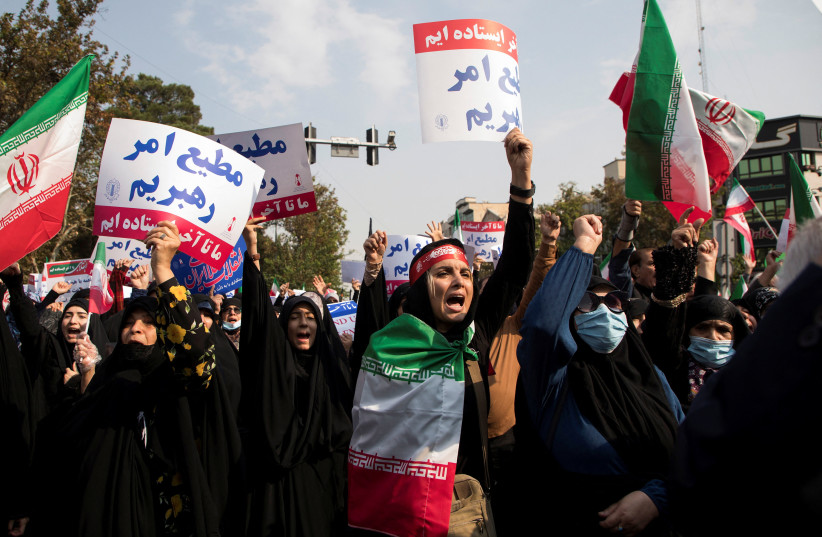Two years after Mahsa Amini’s death, women defy Iran’s hijab law despite crackdown
As Iran marks the second anniversary of Mahsa Amini’s death, it has become increasingly common to see women in Iranian cities walking without the mandatory hijab, a symbol of ongoing defiance and the protests sparked by her death.
Amini, 22, died on September 16, 2022, in a hospital after being arrested by Iran’s morality police for allegedly not wearing her hijab properly. The protests that followed began with the chant “Women, Life, Freedom” but soon evolved into widespread calls for revolt against Supreme Leader Ali Khamenei.
Protests continued daily in Iran through late 2022 and most of 2023, drawing women and men of all ages, backgrounds, and social classes in opposition to the regime. The government responded with a months-long crackdown, killing more than 500 people and detaining over 22,000.
Since April, the regime has intensified its crackdown under the “Noor law,” targeting private businesses where women are seen without headscarves.
Surveillance cameras have been deployed to identify women without headscarves in vehicles, leading to fines and car impoundments. The government has even used drones to monitor events like the 2024 Tehran International Book Fair and Kish Island for violations, according to the UN.

Bahar Ghandehari
“Since the killing of Mahsa Amini, the Islamic Republic’s war on women and its gender apartheid system have only intensified. The dehumanization and discrimination of women are not merely byproducts but central to the government’s strategy to maintain control and suppress dissent,” Bahar Ghandehari, director of communications at the Center for Human Rights in Iran, told The Media Line.
“In recent months, women have faced severe repression, including lengthy prison sentences and even death penalty charges for their activism. Among those at risk of execution are Pekhshan Azizi, a Kurdish women’s rights activist, and Sharifeh Mohammadi, a labor rights advocate,” Ghandehari added.
Shahin Modarres
Shahin Modarres, director of the Iran Desk at ITSS Verona, told The Media Line, “The defiance sparked by Amini’s death is more than an act of rebellion; it planted the seeds for a collective consciousness that freedom must be claimed, not granted. However, both in Iran and the diaspora, the challenge remains the lack of a unified opposition capable of countering the regime’s power.”
In May 2024, Kurdish activist Zhina Modares Gorji was sentenced to 21 years in prison for her support of the Women, Life, Freedom movement. Artist Zara Ismail, 29, was also arrested after a video of her without a hijab went viral. In April, 12 activists, 11 of them women, were sentenced to a total of 60 years in prison. By August, five more women had been sentenced to a combined 20 years.
“The government hopes these harsh sentences will deter people from protesting or expressing dissent. Yet, women continue to resist daily by refusing to wear the hijab and singing in public. In prisons, people protest government executions with hunger strikes every Tuesday,” Ghandehari said.
On September 15, 2024, 34 female political prisoners in Evin Prison, including Nobel Peace Prize laureate Narges Mohammadi, began a hunger strike to mark the second anniversary of the “Women, Life, Freedom” movement and Mahsa Amini’s death.
“Narges Mohammadi and other female activists in Evin Prison were brutally attacked by guards on August 8 for protesting the execution of Reza Rasaei. Despite this, they have remained resilient,” Ghandehari commented.
“Hunger strikes and ongoing protests are acts of self-determination. The regime responds with force because it senses its own fragility, confirming its weakness. While it may control bodies, it cannot command the minds of those who have glimpsed what lies beyond oppression,” Modarres said.
“The new president is simply an extension of the supreme leader’s will, so no significant social reforms are expected. The policies of suppression will continue, but so will the resistance. This is the paradox of tyranny,” Modarres added.
Despite the regime’s continued repression, including police targeting dissenters, protests persist and are expected to continue in the coming months.
“While the resistance is less visible than it was at the start of the movement, it remains strong despite the risks. More will come until true change is achieved,” Ghandehari concluded.
“In the future, we will undoubtedly see more acts of defiance. Once awakened to the moral imperative of freedom, no external force can suppress the will to strive for a more just and equal society,” Modarres concluded.





Comments are closed.